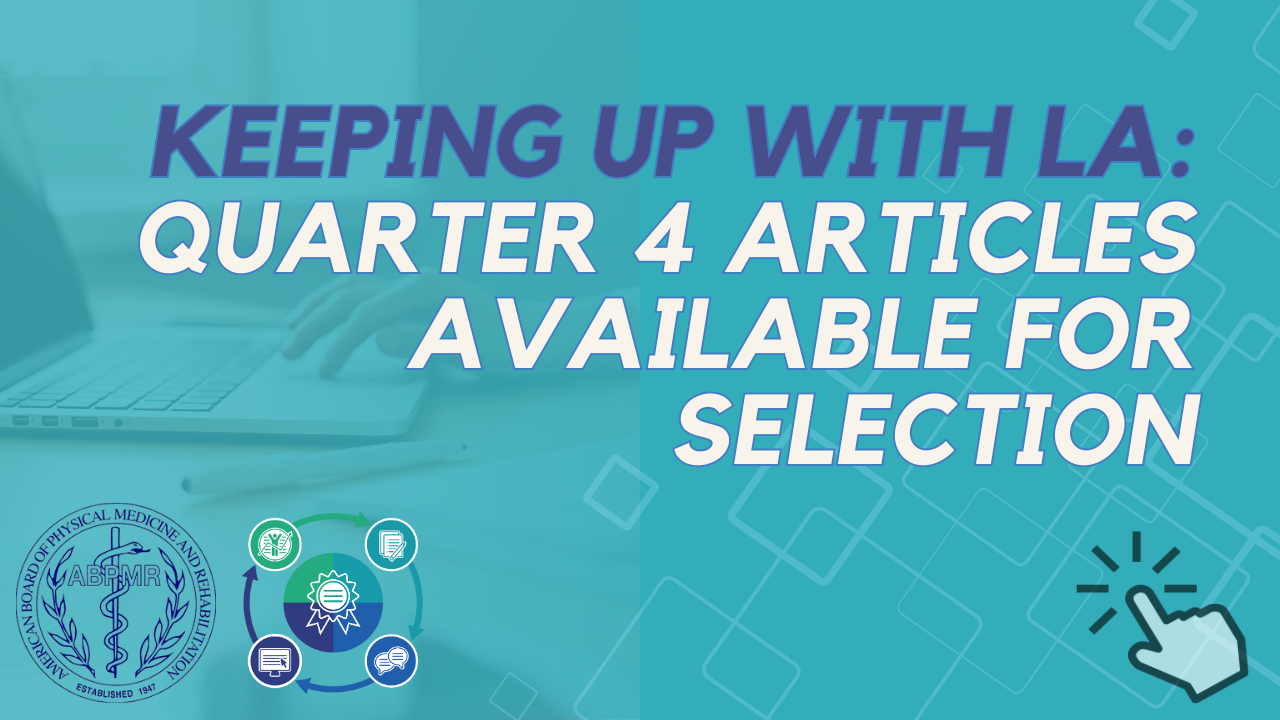LA-PMR
Purpose of LA-PM&R: To Help You Keep Up

In previous posts about LA-PM&R (using CertLink) we referenced the need to shift away from “exam thinking” as we transition to a longitudinal assessment model for MOC. The design of LA-PM&R means differences in whether and how much to study and how LA-PM&R is scored, and today, we’re covering the evolving goal of MOC Part III.
The goal of any secure exam is to measure what you know. This is still important for certifying examinations, when the ABPMR needs to determine an initial level of competency. However, once you’re certified, the goal of longitudinal assessment is to measure both what you know and what you can learn.
LA-PM&R Scoring Rewards Learning
As explained on our LA-PM&R Scoring page, part of the design of the new assessment is partial credit for incorrect answers that are later answered correctly. For example, say you get a question wrong in the first quarter. After you read the critique, you will have a chance to answer the question again (with no consequence) and see the correct answer. In a subsequent quarter, you will likely see a clone question. If you answer the clone question correctly, you will receive half-credit to account for learning.
Seeing a clone, or repeat question a few months later is called spaced repetition — a key design element of the ABPMR LA-PM&R program. In adult learning theory research, spaced repetition has been shown to boost memory retention over time. We’re giving partial credit for evidence of learning because we believe this should be the goal of continuing certification: to help you keep your current knowledge, gain new knowledge over time, and ultimately apply that knowledge to your clinical practice. In this way, the ABPMR wants to partner with diplomates in your lifelong learning efforts toward our shared goal: helping you continually become a better physiatrist for the patients you serve.
Other “Keeping Current” Elements of LA-PM&R
As we’ve been building the LA-PM&R question bank, our volunteers have been focusing on writing literature-supported items that reflect the most common patient care issues physiatrists see every day.
The ABPMR Exam Team is also already looking into developing questions around key articles. This process will involve identifying current key articles, ensuring diplomate access to the articles, and then presenting questions that help you retain this new-to-the-field knowledge and apply it to your clinical practice.
We’re hopeful that this new method of using current, seminal articles as primary source material will help the field integrate new knowledge into practice more quickly, and ultimately help our diplomates keep current and up-to-date with the latest advances in physiatry. We hope to begin releasing article-based questions sometime in the next 2 to 3 years.
The potential for longitudinal assessment to transform continuing certification is exciting, and we’re just getting started. In all of these changes, the ABPMR Board of Directors has just a few main goals for the evolution of MOC: To increase value and reduce burden by providing convenient, accessible tools that make keeping current part of the rhythm of your practice.
Questions about this topic or other aspects of LA-PM&R? Please contact us.

